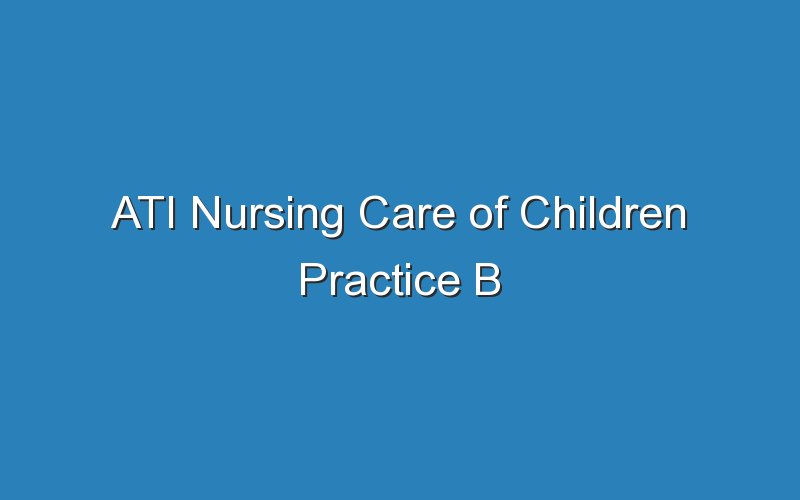ATI RN Nursing Care of Children Practice B is a proctored exam designed to prepare you for the NCLEX-RN examination. In the exam, you’ll demonstrate your skills in caring for a child who is experiencing acute kidney failure. You’ll also observe a child’s developmental milestones, such as identifying the right hand from the left, spreading butter with a utensil, and drawing a stick figure with seven body parts. This part of the course will help you to practice a pediatric nurse’s role in evaluating a child with AKI.
Taking this assessment is a critical part of ATI’s certification program, which will prepare you for the NCLEX-RN. There are 60 questions on the exam and you’ll have 35 minutes to answer them. This part of the ATI exam is a part of your nursing program and is the last step toward becoming an RN. It is important to note that you must take the assessment during the last semester of the program to meet the minimum score for your certification.
Once you’ve completed the assessment, you’ll be ready to sit for the actual exam. This assessment consists of a 60-question test with a three-hour time limit. The test will be proctored, so you won’t have to worry about taking it on your own. You’ll have the option of taking it on the day of the exam or during class. If you pass this part of the exam, you’ll receive the requisites for the ATI peds examination.
The Nursing Care of Children assessment consists of 60 questions with a time limit of 35-75 minutes. If you pass the Practice B test, you’ll receive your license and be able to take the peds exam. You can also choose a date that is convenient for you to complete the peds test during class. It will help you determine what you need to do to be successful in the program.
The ATI RN Predictor exam is designed to prepare you for the RN examination. This exam consists of 60 questions and a time limit of 35 to 75 minutes. All students will take the test during the last semester of the program. The ATI RN Predictor Exam will be administered on 9/27. You will take the ATI peds exam during the final class on the same day.
The ATI Nursing Care of Children practice b assessment will include 60 questions, with a time limit of 35-75 minutes. The ATI peds exam is part of the ATI peds examination and should be taken by all students who have passed the ATI peds test. It is a must-pass exam for a peds certificate. It is also the foundation for a career in pediatrics.
After passing the ATI nursing care of children assessment, the next step is to take the NCLEX-RN exam. The ATI peds exam is the second part of the ATI RN. It has 60 questions, and it is timed for 35-75 minutes. The peds practice b is administered during class. It is a pre-requisite for the ATI RN-NCLEX.
ATI peds exam b is a part of the ATI RN-BNP program. It is a comprehensive examination. It is designed to prepare you for the NCLEX-RN examination. You will also take the ATI nursing care of children practice b online test. The ATI peds exam is a simulated exam that will allow you to pass the peds test.
The ATI RN-BNP exam is timed. The exam is divided into five sections. The first part is the assessment of the nursing care of children. The second section focuses on the clinical evaluation of pediatric patients. A school-aged child may exhibit uncooperative behavior or fear of the unknown. A nurse will reinforce these teaching before discharge and ensure that the child’s progress is in line with the curriculum.
The nurse must also monitor a child’s immune system to identify the presence of infection. In case of a severe case of anemia, a nurse must administer an oral sedative and check the child’s neutrophil count. If the child is asleep, the child should be placed in a lateral position with the nurse, and documentation should be delayed until the child is awake. After a child is asleep, the child should be given a high-carbohydrate snack, and the nurses should wait for the parent to verify the absence of an infection before taking further action.

